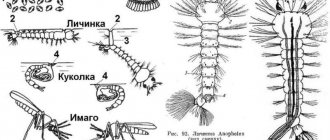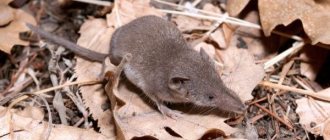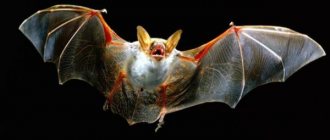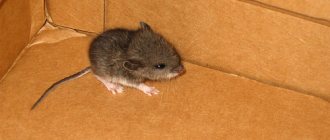Distribution area and habitat of the hedgehog
Hedgehogs are distributed unusually widely throughout the entire territory of our planet.
These unusual animals live in Europe, across a vast territory of Russia, Asia, New Zealand and even Africa. For its life, the hedgehog usually chooses forests, copses, plains with grassy vegetation, steppes, floodplains, near water bodies, and is also found in deserts. He avoids settling only in swampy areas, as well as in coniferous forests. Very often, hedgehogs can be found near human habitats.
Appearance of a hedgehog
The appearance of the hedgehog is very familiar to us all. This is a small animal, up to 30 centimeters long and weighing up to 800 grams. The upper part of the hedgehog's body is densely covered with spines. These are needles up to 3 centimeters long, hollow inside. The hedgehog has a huge number of needles, reaching up to 5 thousand pieces! The needles grow at different angles, forming an impenetrable, thorny mass that poses a serious threat to enemies.
South African hedgehog
The hedgehog's muzzle is elongated, with movable beady eyes, with a wet, movable nose, covered, like the lower part of the body, with dark gray fur. The hedgehog's teeth are strong, the front incisors are more like fangs. The number of teeth reaches 40 pieces.
Ears may vary in size depending on the type of hedgehog. The hedgehog has a tail, but it is small, no more than 3 centimeters, almost invisible from under its prickly fur coat. The hedgehog's legs are short, but the front legs are longer than the back legs. The long toes end in strong claws. With the help of these fingers, the hedgehog cleans its clothing where it can reach.
Ethiopian hedgehog
The hedgehog's vision is not developed, but its hearing and sense of smell are almost perfect. The sounds made by the hedgehog are unusual, reminiscent of snorting and sniffling. The speed at which the hedgehog moves is low, only 3-4 km/hour. The hedgehog's needles change regularly, but they do not change all at once; only a portion of the needles change over the course of a year, so the hedgehog's protective cover is not broken.
long eared hedgehog
Scientists have found that the hedgehog's brain has no convolutions at all. Both hemispheres of the brain are completely smooth. This means that hedgehogs are dumber than mice.
But at the same time, the hedgehog is easily tamed and, with some training, is capable of performing simple tricks.
Extraordinary hedgehog
So, I’m starting a story about useful “wit”. There are about 2 dozen species of hedgehogs. In this article we will look at the habits of the common hedgehog
(from the genus of Eurasian hedgehogs), because it is he who inhabits the territory of Europe, China, Kazakhstan, Western Siberia (up to its northern borders). I note that his more exotic brothers in the family also have a “residence permit” in southern, equatorial countries. So even a baby can answer the question of where hedgehogs live. But we need to talk about his “small” homeland.
It prefers to live in dry or moderately humid areas. Deciduous, mixed and not too dense coniferous forests are his home. And living in a copse, forest edge, or forest clearing is doubly pleasant. Therefore, if there are such natural objects next to the eco-garden, then hurry up and invite the hedgehogs to visit. Hedgehogs can be of great benefit in the garden, as they prefer to eat mainly insects and their larvae. And among the latter there are also many pests: caterpillars, wireworms. But that's not all.
Scisne?
Prickly neighbor
With every minute the disk of the red sunset sun sank lower and lower. Evening dew has already appeared on the young green grass. We lay low on the ground, testing each other's patience. It was getting cool, dusk was approaching, time was running out. However, the hedgehog, curled up into an impregnable spiky ball a couple of meters from me, also had something to hurry: it was the turn of the evening hunt.
Hedgehog on the hunt
| Sensing danger, the hedgehog curls up into a ball and raises needles about 3 cm long. There are none on the stomach; it is covered with thick, coarse hair. Adult hedgehogs have up to 6,000 spines, while young ones have half as many. |
| The search for food begins at dusk. The hedgehog extracts earthworms, slugs, insects and their larvae not only from the surface, but also from underground, making shallow digs. |
| Night parasite. |
| Hedgehog's lair. |
First, the nose appeared from under the needles.
- Wow, wow! — the hedgehog grunted dissatisfied, realizing that I was not going anywhere.
- Ffk! — I snorted quietly out of curiosity.
The hedgehog didn’t answer, but he wasn’t afraid either. Finally, eyes appeared - very tiny black buttons, unimportant helpers in the search for food. A sensitive sense of smell and hearing is what the nocturnal animal primarily relies on. The click of the camera shutter - and the hedgehog immediately curled up into a ball.
...I accidentally came across a hedgehog in a ravine near a stream. It was completely dark there, and I had to take the prickly ball out onto the lawn to take a photo in the rays of the setting sun. True, the hedgehog did not want to participate in the photo shoot at all. Only a few minutes later he turned around again. This time I did not immediately “fire all guns”, but waited until the hedgehog calmed down a little. The tactics helped: I managed to take several shots. Having finished filming, I took the hedgehog back to the ditch. After all, it must be his home there.
In general, hedgehogs do not like to go out to feed before dusk, but in April-May they are forced to begin hunting partially and during daylight hours in order to gain strength after hibernation. Among other mammals, the hedgehog can “boast” of the ability to endure hibernation in deep stupor, when the body temperature drops from 33.7 to 1.8 ° C, the pulse rate decreases from 180 to 20-60 beats per minute and only one breath is taken per minute! In this energy-saving mode, the animal can live up to 240 days, while in a state of wakefulness and ten days of hunger strike can lead to death. Stored fat is consumed during sleep, and it is also used to warm up the body upon awakening. After a long winter hibernation, the hedgehog loses a fifth of its own weight.
Hedgehogs are tireless nocturnal hunters and gatherers. They eat all kinds of beetles, their larvae, slugs, worms and other invertebrates. More nimble animals are hunted less often: on occasion, mice, half-asleep reptiles and amphibians are caught. They will not disdain eggs or chicks if they come across a bird's nest on the ground. Reliable protection - needles - partly determines the fearless nature of hedgehogs. This may be why they easily tolerate being close to humans and are found near housing more often than in completely wild places. But the main factor is, of course, the availability of food.
As soon as the animals are strong enough after hibernation, they begin the breeding season, the timing of which is difficult to determine, since small hedgehogs can be found throughout the warm period of the year. During mating games, males drive away rivals. Seven weeks after mating, the female makes a well-camouflaged nest, and in it three to seven blind, helpless naked hedgehogs with soft rudiments of needles are born, which begin to appear only a few hours after birth. The needles inside are hollow and filled with air, so wearing such a “body armor” is not difficult. Each needle has a special muscle that can raise and lower it.
A newborn baby weighs only 12-14 grams and is comparable in size to a box of matches. Hedgehogs develop quickly on mother's milk. And after two months they become completely independent. The lifespan of these animals is about six years.
Hedgehogs are often taken into the house without thinking about how much trouble this nocturnal animal can cause. His habit of unceremoniously stomping around in the dark is unlikely to please his household. If you feed a hedgehog during the day, then gradually the animal will partially rearrange its daily routine. But this will not save things left on the floor - the hedgehog will build his lair from them. Keeping these animals in captivity is the prerogative of special nurseries. Inexperienced nature lovers should be content with observing hedgehogs in their natural habitat.
This summer I had another encounter with a hedgehog. He began to regularly visit the porch of our rural house, where we leave food for the wild cat. He usually appeared in the thick twilight, when the courtyard became quiet. I drank milk, ate buckwheat porridge, and gave particular preference to chicken bones. But I didn’t seem to notice the sour Antonov apples. In the bright light he continued to eat calmly. But as soon as the animal heard some suspicious noise, it immediately became wary and, if the noise did not stop, went into the raspberry thickets, where it hid under an old box.
One day I managed to find a hedgehog lying during the day in an oak planting. The beast made a lair for itself from a pile of last year's leaves in an undergrowth of thorns. And his enemies - dogs, foxes, ferrets, badgers, large owls - were not afraid of him.
In general, this year turned out to be somewhat of a hedgehog; apparently, there was plenty of food in the forest. I don’t want just May Khrushchev, eat it! This means that in the future there will be someone to restore order among the slugs, beetles and other plant pests that roam at night.
Vasily Vishnevsky. Photo by the author
Hedgehogs and mice
The most common myth is that hedgehogs eat mice. They may have enjoyed eating mice, but they couldn’t keep up with them.
Children's books are full of pictures of hedgehogs carrying apples or other fruits and vegetables. This is also a myth. They are not able to curl up enough to impale a large object on themselves.
Hedgehogs are very well and quickly tamed. In addition, they get along with pets. For example: dogs and cats. People are reluctant to have hedgehogs at home. After all, they stomp heavily, especially at night.
Interestingly, scientists have proven it. That both hemispheres of a hedgehog's brain are smooth. They are very stupid, but they quickly learn to follow simple commands and even a hedgehog can be trained to use the tray. But hedgehogs always choose a place for a toilet on their own. Only then will people need to put a tray in that place.
An interesting story about the death of hundreds of hedgehogs. McDonald's was the culprit. They made McFest ice cream in wide-necked cups. Hedgehogs could easily stick their heads into the glass, but they couldn’t stick their heads out. Thus, the hedgehogs died of starvation. After environmentalists took up this issue. Ice cream cups have been changed. They made wide necks and now the hedgehogs are safe.
How do hedgehogs eat vipers?
An interesting feature of these prickly animals is that their body is insensitive to snake venom. They are also not particularly worried about being bitten by a dangerous enemy, since vulnerable areas of the body are covered with densely planted spines.
Reference. It is believed that there are no snakes in the areas where hedgehogs live.
Defenseless snakes, as well as dangerous vipers capable of defending themselves, can become prey for hedgehogs. How does a hedgehog manage to catch a dangerous viper? When catching such prey, the hedgehog makes a lightning-fast bite of great force and immediately after that curls up into a ball. This tactic allows you to protect yourself from a dangerous retaliatory strike. Next, the animal repeats its trick and continues until the snake is completely weakened. Now the viper becomes easy prey for the hedgehog, which, by the way, is a dangerous and ruthless predator. If you have snakes in your dacha or garden, you should try to lure a hedgehog to your area.
Reference. Some people use a method of fighting snakes called the “drunken hedgehog” or “Hungarian way.” It is necessary to place beer or wine in small quantities on the site in saucers. A hedgehog that has taken to its chest will be mercilessly butchered by seven competitors on its territory.
Hedgehogs are carnivores by nature and are picky about their diet. They are ready to eat everything they manage to catch.
Signs that hedgehogs have taken up residence in your garden
The hedgehog who lives in your dacha also considers its territory his own. Here he has a place to build a nest and something to profit from. Hedges, compost pits, thickets of rosehip or chokeberry are very attractive to the hedgehog family.
How to determine that a hedgehog has appeared on a summer cottage?
There are several characteristic signs:
- Upside down, ruffled ground leaf litter. Hedgehogs like to rest in damp, dark places such as lying logs or compost piles. When setting up its nest, the hedgehog sorts through the dry wood in search of the necessary material. Therefore, a disturbed layer of foliage is the first sign.
- Changes inside the hedgehog's home. The appearance of an animal can be determined by the presence of traces of activity, for example, shifted and turned over leaves at its wintering site or in a house specially built for hedgehogs.
- Presence of litter. The hedgehog leaves excrement on the ground that is difficult to miss. Hedgehog droppings are similar in appearance to cat droppings, but more round in shape. Its appearance on the site clearly indicates that the hedgehog has begun its life activities.
- Recording from CCTV camera. Monitoring the house and territory using technical means will allow you to record everyone who appears on the site at night. It is advisable to set up the cameras so that you can see this small animal.
- Living hedgehogs with neighbors. An animal that settles in one summer cottage may well move to another. After all, hedgehogs travel at night and regularly cover distances of up to one and a half kilometers.
It is important that between neighboring areas there are fences and barriers that are safe for hedgehogs, so that animals can safely move in search of housing and food
Where do hedgehogs winter? How can a gardener help them sleep without anxiety?
Already from the subtitle it became clear that winter is the time of hedgehog hibernation. They look for unique nests for her, but do not engage in construction themselves. Heaps of dry leaves, low-pubescent branches or even secluded corners in lying building materials (boards, slate) - this is where these animals while away the winter. Naturally, their life will largely depend on the temperature outside and on the level of snow that has fallen (it is also an insulating material). To be sure that in the spring adults, and small hedgehogs with them, will again start running around the dacha plot at night, it is better to provide them with comfortable housing.
Knowing where hedgehogs spend the winter will simply help them. To do this, make a covered house from boards (simple, with a flat or sloping roof, approximately 50*40*30 in size), remember about ventilation and an accessible entrance. Place leaves, dry moss and other natural insulation materials in the house.
By the way, if it rains often, then strengthen the roof with clay or put some kind of covering material on it. Place this structure on the same piece of land (preferably even in a small depression) where hedgehogs live nearby. They will definitely like it. You will be confident that the animals are alive and well.
Such houses also provide a guarantee that cats or dogs will not accidentally stumble upon a sleeping hedgehog. They are unlikely to attack it (in the summer this can end very badly for pets), but they can destroy the nest in the harsh season.
And it is important to feed hedgehogs before hibernation so that they have more fat reserves. Do you remember what hedgehogs eat? You are unlikely to catch insects on purpose, but dry and wet food for cats and dogs is a good option. Don't forget to place a bowl of water and pieces of fruit nearby.
So, now you know what hedgehogs eat and, probably, many of you were simply amazed by their diet. And from the information about where hedgehogs live, it became clear that a well-equipped eco-garden is a treasured place for them.
I wish that such an interesting neighbor as the common hedgehog will settle in your garden as soon as possible.
I advise, dear readers, not to miss the publication of new materials on this blog.
Since childhood, we have been familiar with fairy tales and cartoons about hedgehogs, in which the main character stocks up on fruits and mushrooms for the winter. But this is just a made-up myth. In fact, hedgehogs never store supplies to survive the winter.
Both in nature and at home, they accumulate fat, starting in spring and ending in late autumn. To do this, hedgehogs need to eat a lot.
What to feed your pet hedgehog?
Most often he eats the same as his owner. But under no circumstances should you give foods that you eat yourself. Food from the table will kill the animal, and you yourself will not know why the hedgehog died so early. The best food for a domestic hedgehog is specialized food. But it is very difficult to get them in the CIS countries. The best option may be premium cat food, and then only in the first few days. Then you will have to create a special menu for the new tenant.
Products you can feed your hedgehog at home:
Make sure all food is fresh and at room temperature. Be sure to remove any remaining food in the cage so that the hedgehog does not eat spoiled food and get poisoned.
Foods that should not be given to hedgehogs:
- onion and garlic;
- various exotic fruits (all citrus fruits, pineapples, avocados, mangoes and others);
- dried fruits (due to poor traffic);
- grapes (possibility of choking on seeds);
- seeds and nuts (because they are very fatty and the hedgehog will get an upset stomach);
- fast food products;
- milk.
The legend that hedgehogs love milk is very common, but in fact, milk is detrimental for hedgehogs, since their body does not digest lactose. If a long-lived hedgehog lives from 5 to 6 years, then a hedgehog that drinks milk will not live even a year.
Hedgehogs are mammals that can live not only in natural conditions, but also next to humans. Some summer residents try to feed them, hoping that these prickly guests will protect their area from snakes and mice. Whether hedgehogs actually eat mice, you will find out in this article.
Nutrition of hedgehogs in the wild and what hedgehogs eat at home, and how to eat properly
Since childhood, every child knows the hedgehog from the cartoon character where he stocks up on apples and mushrooms for the winter. In fact, hedgehogs do not make any preparations for the winter. Both in the wild and at home, they accumulate fat from spring to autumn in order to survive the winter. To do this they need to eat a lot.
The hedgehog is the most common animal, its habitat is the territory of Europe, Siberia, Asia Minor, Kazakhstan, and China. They eat a wide variety of foods, it all depends on their habitat.
Usually hedgehogs live in forests and parks, but very often they can wander into a country house or residential area. Hedgehogs are not at all afraid of people and therefore often suffer when they become victims of dogs - in this case even their thorns do not help them. Very often these animals die under the wheels of cars.
First of all, hedgehogs are insectivores. In nature they feed on:
- insects and their larvae;
- slugs;
- earthworms.
They can also catch mice (in the wild - voles). They can catch frogs and snakes, but only when they are inactive. Hedgehogs love to feast on eggs or chicks, but can catch more active animals. In addition to all living creatures, hedgehogs love to eat fruits and berries.
In addition to beetles and ordinary snakes, hedgehogs can eat very poisonous individuals - vipers, blister beetles, May beetles, and hairy ground beetles. After such food, the animal does not die and does not become ill, since its body is resistant to various poisons.
We suggest you read: Will laundry soap help against fleas?
At home, a hedgehog usually eats what its owner eats. But you shouldn’t feed him this way; food from the table is very harmful for this animal. If he dies early, then no owner will understand why this happened.
The best food for a pet hedgehog is special food. But in our country it is almost impossible to buy them, so you can replace them with cat food, and then only for the first time.
Then you should create a special menu for this prickly pet.
List of products you can feed your hedgehog at home:
- chicken offal;
- lean boiled meat - chicken, turkey;
- a small amount of fruit - pear, apple, strawberry, raspberry;
- some vegetables - cucumbers, sweet peppers, carrots, pumpkin;
- live insects;
- raw chicken or quail egg - once a week.
You should ensure that all products are fresh and warm (room temperature). After eating, all leftover food must be removed so that the hedgehog does not get poisoned by spoiled food.
Under no circumstances should hedgehogs be given:
- garlic, onion;
- citrus fruits, pineapple and all exotic fruits;
- dried fruits, as they are difficult to digest;
- grapes - can choke on the seeds;
- nuts, seeds - may cause stomach upset;
- milk;
- fast food products.
It is a common myth that hedgehogs love milk. Milk is contraindicated for them, since their body does not digest lactose at all. The lifespan of hedgehogs is usually 5-6 years, but a hedgehog that drinks milk only has a lifespan of 1 year.
Most importantly, your hedgehog should always have fresh drinking water. It should be remembered that hedgehogs are predators and therefore should always eat food of animal origin, which is rich in proteins.
Where do hedgehogs live?
There are 23 species of representatives of this class in the world, they are distributed throughout the globe, and in Russia - almost everywhere. Hedgehogs do not live only in South America, Australia, Madagascar and Antarctica.
Their settlements can be found under tree roots, in thorny bushes, in a pile of brushwood, or in an abandoned rodent burrow. Hedgehogs live individually and protect their ball areas. In such areas, hedgehogs build separate nests, which are lined inside with moss, dry leaves and grass.
Hedgehogs go out hunting at night, and during the day they go to sleep in a shelter, curled up in a ball.
Their heart rate and respiratory activity are greatly reduced at this time. If the animal has failed to accumulate fat over the summer, then during hibernation it will certainly die of starvation.
In unfavorable years, during hibernation, up to 45% of adult hedgehogs and up to 80% of young hedgehogs die. In nature, hedgehogs live from 3 to 7 years, and at home their life expectancy increases to 15 years.
Anyone who loves animals does not refuse to keep hedgehogs, especially since it is not difficult.
The hedgehog easily adapts to life next to a person and is very often kept as a pet. Even the Romans in the 4th century. BC e. They raised hedgehogs for meat; they baked them in clay along with needles. Hedgehog skins were widely used for leather.
The common hedgehog is useful in exterminating harmful insects and harmful in that it eats chicks and eggs of birds that nest on the ground.
Also, this prickly animal can be a carrier of diseases such as salmonellosis, fever, rabies. There are large numbers of fleas and ticks on their skin. The study of ticks has proven that hedgehogs are fed by ticks in all phases of their development. The hedgehog is unable to get rid of ticks that have climbed between the needles.
Livelihood of hedgehogs
Of the 19 species of hedgehogs found in nature, the common hedgehog mainly lives in our region. It can be found anywhere: in steppes and thickets near rivers, on grassy plains, in plantings and mixed forests. Animals do not settle only in coniferous forests and swampy areas. Hedgehogs do not mark territory, but stick to the boundaries of a specific area, which they regularly survey in the hunt for prey, and live one individual at a time.
The animal's body is covered with needles - keratinized hairs that perform a protective function. Studies have shown that an adult hedgehog has up to 6 thousand spines. The keratinizations perfectly protect hedgehogs from attacks by predators, but at the same time they contribute to the accumulation of ticks and other dangerous parasites on the animal’s body. Long fingers help the animal to independently get rid of insects stuck in the thorns, and the animal has adapted to “remove” those that it cannot reach with the help of fermented fruits, collecting them on its growths.
Hedgehogs are nocturnal animals, they cannot stand the heat; during the daytime they hide in heaps of leaves or cozy nests made of moss, grass and branches.
They build their homes under dry stumps and tree roots. The nests are small in size - about 20-25 cm. Hedgehogs hibernate for the winter, before which they feed heavily and carefully insulate their nests with dry leaves and moss. If fat reserves are insufficient, the animal may die.
In winter, their homes are covered with snow, and the animals sleep peacefully until the first warmth. All vital processes slow down, the number of pulse contractions decreases to 20-60 per minute, and body temperature drops. In April, as the ambient temperature rises and the snow melts, hedgehogs awaken and begin hunting.
Food preferences
Hedgehogs are predators and belong to the class of mammals. In terms of nutrition, they do not neglect anything. These animals are almost omnivorous ; they can eat:
- beetles, earthworms, garden snails, slugs;
- frogs, snakes, lizards;
- mice, baby birds and hares;
- eggs of quail, black grouse or partridge.
Such gluttony and indiscriminate eating stems from the animal’s high activity and the need to create a fat reserve for the winter. The oral apparatus of hedgehogs is designed for processing food of any kind; in the mouth the animal has 20 upper and 16 lower teeth. In addition to animal food, animals also eat plant food (fruits and berries), only in much smaller quantities.
After emerging from suspended animation, hedgehogs are especially in need of nutrition, as their fat reserves are running low. During this period, the animal can eat up to a third of its own weight in feed overnight.
When kept at home, animals eat eggs, meat, and can consume small amounts of bread and porridge. Contrary to popular belief, it is not beneficial for hedgehogs to eat dairy products, since these animals have physiological lactose intolerance. The consequence of such nutrition can be severe digestive disorders.
People have learned to use the gluttony and eating habits of hedgehogs for their own purposes. These animals are natural enemies of rodents and many harmful insects, so they can be of great benefit by settling next to human habitation.
Do hedgehogs hunt mice? Animals are not as agile as cats, so in open areas it is difficult for them to catch a nimble rodent. The main source of food for hedgehogs is insects, but at the same time, hedgehogs bring certain benefits by destroying mouse nests and eating broods.
The very presence of prickly animals scares away mice and rats from human homes and outbuildings. At night, hedgehogs look for burrows of small rodents and patiently wait for them to appear before suddenly attacking the pest.
Features of animal nutrition
There are 19 species of hedgehogs living in nature.
In our area, the common hedgehog is more common. He lives in the forest, in the fields. The body is covered with keratinized hairs called quills. In an adult, there are about 6 thousand of them. The animal belongs to the family of mammals and is a predator. Regarding nutrition, it seems that hedgehogs are omnivores. Their diet includes:
- earthworms;
- beetles;
- frogs;
- snakes;
- snakes;
- lizards;
- different types of mice.
Contrary to popular belief, animals do not eat mushrooms or berries and remain indifferent to apples. The main diet consists of insects; occasionally the hedgehog catches mice, especially voles. Wood mice and house mice can also become his dinner.
Interesting!
Ticks often appear on the body of the animal, under a layer of thorns. The animal cannot get them on its own. It gets close to berries, apples, and pricks them on thorns. Sour smell, juice repels ticks. In this way, the animal gets rid of parasites and does not carry kilograms of apples to make supplies for the winter.
People often use the feeding habits of mammals for their own purposes. In the fight against pests, all means are good, but natural enemies are especially valued, among which are spiny animals. The question of whether hedgehogs eat mice haunts us. It is very convenient to place a couple of prickly animals in the area and forget about rodents in the garden, orchards, and chicken coops forever. In the dark, the animal will slowly begin to eat pests without creating much noise.
Enemies of hedgehogs in the wild
The hedgehog has many enemies in nature: foxes, wolves, snakes, ferrets, kites, martens, eagle owls, etc. When attacked by a predator, the hedgehog defends itself with a bunch of sharp needles in the frontal part, and if the forces are unequal, it curls up into an impregnable ball. The enemy, seeing that the thorny ball cannot be unrolled without injuring the paws and muzzle, gradually loses interest in the prey.
But some predators have quite developed intelligence and are able to come up with methods of fighting hedgehogs. It has long been noticed that a fox tries to throw a hedgehog into a pond, and, waiting until it is forced to turn around to swim, attacks. The eagle owl strives to silently and sharply “fall” from a height, not allowing the prey to come to its senses. Its clawed paws have hard scales that are not afraid of even the sharp spines of a hedgehog.
Snakes, not endowed with special intelligence, certainly play around in a fight with a hedgehog. He has his own tactics: grabbing the snake’s tail, he begins to curl up into a ball and gradually pulls it under him. Snake venom is not scary for hedgehogs. This amazing animal is not sensitive to many aggressive substances: biological fluids of ladybugs, caterpillars, bee venom and Spanish fly toxin. For other mammals, contact with these substances is fatal. It has been noted that even such highly toxic poisons as opium, hydrocyanic acid, sublimate and arsenic will not lead to the death of the animal, although it is sensitive to them.
Due to the large number of predators wanting to feast on the hedgehog, the animal’s life in the natural environment is short, only 3-5 years. In captivity, it can live 10-15 years, but it is believed that this animal is not suitable for keeping at home. At night he rustles, snorts and makes other various noises.
Hedgehog or cat
Science has long known that hedgehogs eat mice. Evidence of such a hunt is provided by eyewitness accounts. Some people even believe that prickly animals cope with this task much better than other predators who eat mice, such as cats.
It's interesting how a hedgehog catches mice. After all, a frankly clumsy animal is not at all characterized by high speed of movement, flexibility, evasiveness and a quiet approach. In addition, while moving, the animal often snorts and rustles its spines.
Hunting instincts
It has long been known that hedgehogs eat mice. This is evidenced by the statements of scientists; the animals were seen doing this by eyewitnesses.
On a note!
The villagers are trying to appease the animal with milk so that it stays near the house. According to scientific information, this product is contraindicated. The hedgehog develops a terrible eating disorder, which puts the animal at risk of death.
How hedgehogs catch mice remains a mystery to many. They are not flexible, speedy, or quiet. They constantly snort and rustle their spines. The hedgehog hunts only at night and uses its sense of smell. It is very interesting to watch how the animal catches its prey.
There are several hunting options:
- Looks for holes, waits until the mouse appears at the exit. Quickly grabs the neck with sharp teeth and inflicts a fatal bite.
- He hears the rustling of mice and hides for a while in the grass, in a dark place. As soon as the prey appears on the horizon, it strives to catch food.
The small, prickly, clumsy animal is not capable of chasing rodents; in hunting instincts it is much inferior to cats. Prefers a vole, an ordinary gray mouse.
How to cook sprat in tomato sauce at home Cold sprat dishes in tomato
11.01.2021
Nutritionist's advice: how to eat less (3 photos) What to do to make you want to eat less
03.01.2021
Scientists have studied the number and causes of deaths during selfies
20.12.2020
Spiny Hunter
It’s worth noting right away that there are quite a lot of misconceptions that are associated with these animals, so let’s try to gradually sort them out.
Reference. Many people think that hedgehogs are kind and cute and don’t know how to bite. Agree that when you meet a hedgehog on your way, you will immediately try to touch it, but it seems so defenseless. In fact, he can quite realistically stand up for himself and will bite you quite painfully, and in addition he will infect you with some kind of infection. Hedgehogs, by the way, carry rabies.
So, is it true that hedgehogs are good at catching mice? For some reason, many people believe that this is true and actively try to lure the prickly hunter to their site so that the hedgehogs catch mice. But in fact, hedgehogs are not very good at catching mice.
Why are they not good at hunting small mice? The thing is that hedgehogs have club feet, and when walking they create quite a lot of noise. Despite the fact that the hedgehog runs quite quickly, it makes a lot of noise, so all the mice run away from it. Of course, if he manages to catch a mouse, he will enjoy it with pleasure. How do they manage to catch such a delicacy? Most likely, their prey was somehow sick, lame, or inattentive.
Hedgehogs can also act according to the following schemes:
- They look for mouse holes and stay near them until the mouse crawls out of its house. When the prey sticks its nose out of the hole, the hedgehog quickly grabs it by the neck with its sharp teeth, thereby inflicting a fatal bite.
- Hearing the rustle of mice moving, he hides in the grass. As soon as the prey comes closer to the hedgehog, it grabs it.
Important. There is no need to feed the hedgehog milk to your site. Of course, when he sees the treat left for him, he will drink it, but then he will feel unwell. Do not mock the animal, do not pour milk on it.
What misconceptions are associated with hedgehogs?
In nature, scientists have counted nineteen species of hedgehogs. There are seven species of them on the territory of the former USSR. The most common species is the common hedgehog. There are many misconceptions associated with these cute animals. I'll try to list a few.
For some reason, it is generally accepted that a hedgehog is better than a cat at catching mice. For this reason, they try to specially lure hedgehogs to their homes by pouring milk into a saucer. However, hedgehogs are very bad at catching mice in the wild. Why? Due to the fact that clubfoot makes a lot of noise when walking. Of course, the hedgehog runs well. But it creates even more noise here than when walking. What kind of mouse would wait for a hunting hedgehog? Only sick or too careless. These are the mice that hedgehogs sometimes encounter.
Attracting hedgehogs to your home is a barbaric practice. Although they are mammals and feed hedgehogs with milk, this does not mean that an adult hedgehog can also feed on it. The stomach of an adult hedgehog is not adapted to process milk well. A hungry hedgehog, of course, will drink milk from a saucer. What else can he eat while locked up at home? But drinking milk will result in an upset stomach for the hedgehog. If you do not seek help from a veterinarian, the outcome can be fatal for the animal.
Usually a hedgehog is drawn in a picture with an apple or a mushroom on its back. And here again there is a misconception. Hedgehogs don’t eat both. And there is no need for them to prick needles. But something else is known. Hedgehogs, in search of food, climb into places where many ticks “catch”. And since they are small, they easily slip between the needles and dig into the skin. To get rid of these parasites, hedgehogs spend a long time looking for forest apple trees. And having found them, they fall on their sides and rub against the rotting fruits. Some of them may get stuck on needles. But only from the side, and not at the very top of the back. Ticks do not like sour smells and partially leave hedgehogs.
If you are planning to “shelter” a hedgehog, be sure to remember about ticks. They can get into your house with this animal. If there is a risk of encephalitis in your area, then this dangerous disease can be transmitted to you from a tick bite and at home.
It is also a common misconception that hedgehogs do not bite. How they bite with their small and sharp teeth! Especially if you are angry. And with a bite, dangerous diseases can enter your bloodstream - encephalitis, rabies, helminthiasis.
And now about other misconceptions - more neutral ones.
Hedgehogs and porcupines are not related at all. Although both have needles. But hedgehogs and porcupines are “registered” in completely different “categories”. Porcupines are rodents.
Many people say with confidence that the hedgehog’s main enemy is the fox. She, seeing the hedgehog, tries to grab it by the lower abdomen, which is not protected by needles. Of course, the hedgehog quickly curls up into a ball of solid needles. What does the fox do next? She carefully begins to roll this ball with her nose to a puddle, river, lake and there she pushes it into the water. The hedgehog, in order not to choke, is forced to turn around from the ball and swim. And this is exactly what the fox needs from him: she immediately grabs him by the lower abdomen and bites him. But hedgehogs are well aware of this trick of the red-haired gossip, so they try to stay away from the water. It is very rare for a fox to feast on tender hedgehog meat.
But the eagle owl (night robber) grabs the hedgehog with its claws even through the needles. And since hedgehogs are also nocturnal hunters, they are caught by eagle owls in large numbers. But why don’t eagle owls get injured on needles? Their paws are covered with powerful “armor” - heavily keratinized skin. Having grabbed the hedgehog with its claws, the eagle owl tears it into pieces and tears out the meat with its beak.
Hedgehogs are loved; fairy tales and cartoons are dedicated to them. But do not forget that there are certain misconceptions associated with these cute, funny animals.
Tags: hedgehogs, misconceptions, animals, nature











